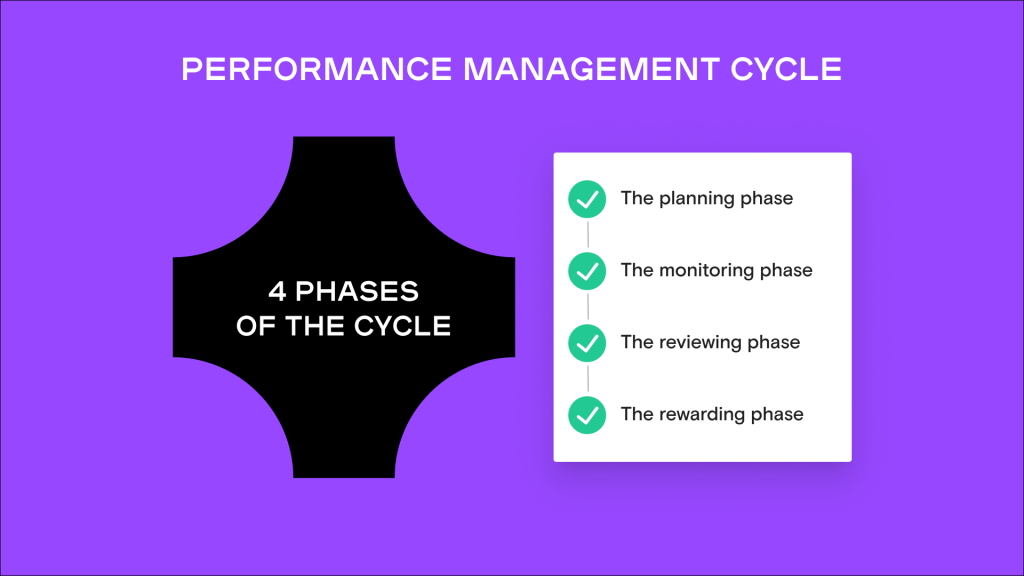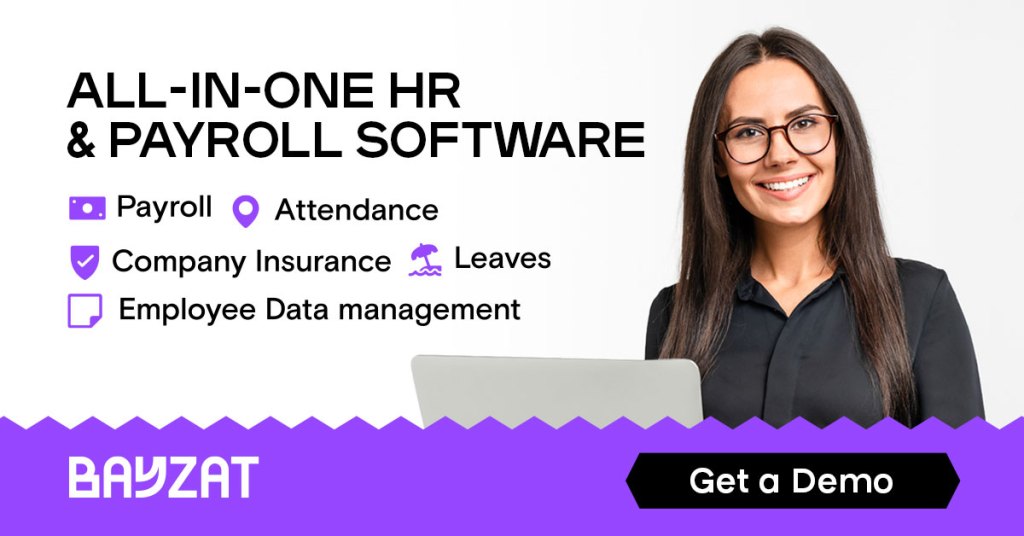People are your most powerful asset. Employees that are happy and content at work can perform better. As your workforce becomes more productive, your business will benefit. But how can you make sure employees are performing well? What does good performance even look like in a modern company? This guide will look at one of the critical concepts of contemporary organization: performance management.
What is Performance Management?
Performance Management refers to the process of continuously monitoring, measuring and improving employee performance to align it with the organization’s goals and objectives. Managing performance is essentially about monitoring and enhancing your employees’ work. You are taking a critical look at how each individual employee and teamwork. Based on your findings, you can implement new best practices, improve the work environment and help the employees thrive.
Difference Between Performance Management vs Performance Evaluation

The above can make it sounds like performance management is the same as performance evaluation. But the two are different, and it’s important to understand performance management is a more comprehensive approach to how employees are doing.
The key difference between performance management and performance evaluation are:
- Performance management helps employees to develop and improve their performance, whereas performance evaluation focuses on examining the actual performance.
- Performance evaluation is a more past-focused feedback tool compared to the past and forward-looking nature of performance management.
- Performance management tends to be a holistic approach compared to the individualistic approach of performance evaluation.
Generally, performance evaluation is more of a tool for performance management. You want to look out at how your employees did on any given task or project. But it’s important to make sure you are also using the information you get from performance evaluations to boost productivity.
The Goal of Performance Management
Employee management and the improvement of work performance are at the core of performance management. The goal is to provide both managers and employees with a better system of framework to operate in. The working framework should, in theory, then lead to increased productivity and better employee experience.
Key Components of a Performance Management System
But what are the key components of a performance management system? What to look out for when looking for a system to use?
The following elements are a must-have when building a framework that lasts and works well:
- Strong involvement by the management team – Your managers must be involved in the creation of the performance management framework. The management team should know the ins and outs of what ‘great performance’ in your organization looks like. If they do, they can set realistic goals for the rest of the team to achieve.
- Well-defined goals and objectives – The foundation of many effective frameworks is a set of goals and objectives. You can’t create a strong system to manage employees if you don’t know what you’re trying to achieve. Remember that your performance management goals and objectives should always align with your wider organizational purpose and strategy.
- Continuous development – The system must be built around the idea of constant improvement and development. You want to support your employees in developing their skills. If employees feel they are supported in learning, they will be more motivated and help the business move forward.
- Open feedback systems – There needs to be open and continuous feedback mechanics to support the performance management cycle. Both good and bad feedback should be delivered openly and with the objective of using it to improve. Employees need to understand where the feedback is coming from and then have support to use the information for improvement.
- Ongoing communication – Your performance management system shouldn’t be about giving feedback every once in a while. It’s important to make the system continuous and consistent. It means employees can always turn up to management for performance-related questions and solve issues they might have.
The above components are the core of any performance management system. Whether you are setting up a framework or opting for a Human Resource Management System (HRMS), these are the features you need to be on the lookout for.
Read More: How HR Can Create a Comprehensive Talent Strategy
The Typical Business Performance Management Cycle

Now that you understand the key components of the performance management framework, you can start implementing the typical performance management cycle. There are four parts to the typical cycle:
- The planning phase
The first step to take is planning. You need to create a plan, identifying objectives and goals, as well as the framework for your strategy. The planning should start from the top. However, it is essential not to create a pure top-down strategy – you want all the different players involved in the process.
As you start planning for the system, your focus should be on your bigger organizational goals. What is your business trying to achieve, and how can performance help with this goal?
Once you understand the wider strategy, you can start planning for the smaller steps to take in order to achieve these goals.
- The monitoring phase
Once you have a framework and a system in place, you can start to evaluate and follow how your performance management is working. Monitoring the implementation can take many forms. You should focus on assessing individual employee performance, getting feedback on how the framework is working, and what the possible problems are.
- The reviewing phase
Closely followed by the monitoring phase is the reviewing part of performance management. You will need to provide effective feedback to all of your employees. The review system should just involve the management but each member of the team. Things like peer evaluations can be very effective in understanding how to improve your performance.
The review phase should be focused on providing feedback to employees face-to-face and in written format. Interviews and performance reviews can be helpful, but employees should also have a record of what was said. This can be an important part of improving one’s performance.
Make sure the review phase also looks at self-assessment. You don’t want to have just other people tell someone what they are doing. You also need to let employees take a critical look at their performance.
- The rewarding phase
Finally, you have the reward phase of performance management. It is important employees feel rewarded when they are hitting those goals you’ve set for them. When they deliver their part, you need to show them appreciation because that’s a key to future improvement.
The rewards for your employees can come in many forms. It is important to use the following reward systems:
- Salary increases – the obvious but not the only perk employees want.
- Flexible work arrangements – including work from home or extra time off.
- Bonuses – monetary bonuses can be a great added extra.
- Promotions – you want to provide employees with a clear vision of progress within the organization.
- Non-monetary perks – these can include things such as gym memberships to discounts at certain stores.
On top of that, you also should nurture an environment of positive feedback. Tell employees when they are doing a good job and encourage them to congratulate each other on a regular basis.
Read More: A Comprehensive Guide to the Performance Management Cycle
How do you measure Performance Management?
The trickiest part of employee management can be measuring performance. What is good performance? How do you know employees are hitting their goals?
Achievements aren’t always easy to measure. Making a 10k sale is not a hard thing to see – you either do it, or you don’t. But most performance issues are not straightforward like that. Your employee can be great at creating a positive work environment but measuring this is difficult.
Performance management systems should always be centralized with clear records of what is being said, the feedback that is going around, and the evaluations you’re making. You don’t want to stare only at monetary or other numerical metrics but also take into account how employees are feeling about any given situation and performer. Qualitative and quantitive data can help understand where an employee is in regard to their performance.
Read More : The ROI of Performance Management: Measuring What Matters
Why Does Performance Management Matter?
For any organization, big or small, having a productive workforce is the key to survival. If your employees are productive and happy, then you’re going to see great results in your bottom line.
But performance management matters even on the individual level. Good HR management helps each employee figure out their strengths and weaknesses. It can help develop the correct skillset and create an environment where an employee feels supported and trusted. Your employees have a better understanding of what is expected of them and the knowledge they are doing the right thing.
You go from employees just operating to knowing exactly what good performance is and how to achieve it. One of the main reasons why performance management matters so much is because it helps motivate employees. They can be aware of the benefits of ‘doing their job right’.
Obviously, these individual victories help your organization as a whole. When HR performance management is working correctly, you can spot issues early. For example, you can identify any possible skill gaps and solve them before they turn into a bigger operational issue.
Overall, performance management matters because it helps your organization to improve and grow. You are being proactive rather than reactive.
Trends in Performance Management for 2023
Performance management hasn’t always looked the same, even though the core principles are constant. There are always unique trends influencing it, and 2023 will be no different. The year will put these trends at the heart of HR management:
- Individual employee experience – creating more flexible systems to support work.
- Humanizing employee-manager relationships – management will become more emotionally supportive and authentic.
- The rise of part-time workers – more organizations have to deal with part-time and non-permanent workers.
- Development and training – improving employee skills have become a central part of the modern workforce.
The above trends are going to create unique challenges for the HR department and performance management framework. But they can be turned into a benefit with the right tools in place.
Why You Want to Use a Performance Management System

Putting the above together, you can understand the impact of great organizational management. Your business can create a rewarding and empowering environment by getting performance management right. You reward excellence and appreciate the hard work your talented employees are doing.
Creating a positive performance management system is a lot easier with the right tools. Your HR management framework can greatly benefit from software. Bayzat’s performance management helps you create goals, get rid of the guesswork and create an open and transparent feedback system. You can collaborate on objectives better and let the team know how well you’re achieving individual goals.
A positive work culture takes systems around it to work. With the right performance management software, you can support these frameworks better. So don’t hesitate any longer – contact us for more information today!








Get Social